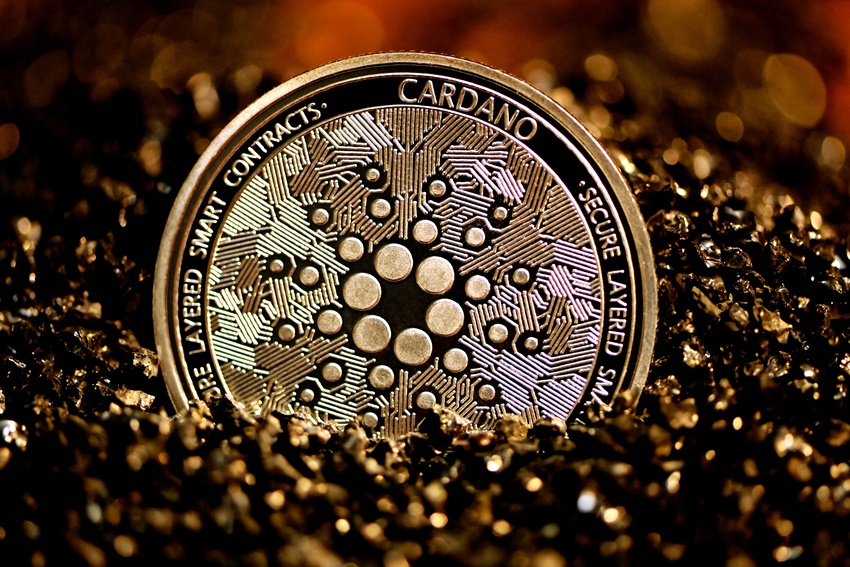Crypto has always been uncertain, between the crypto scams and the volatility crypto appears to be a bad investment. It may be, or it’s too early to tell, if you do decide to buy then please spend the time researching real projects and be careful of crypto. This post is about environmentally friendly crypto currency with a story from 2021. Please use caution when investing in crypto.
Earlier in May 2021, Elon Musk announced that Tesla would no longer be accepting Bitcoin as payment for vehicle purchases. Overnight, the price of Bitcoin plummeted and was nearly halved soon thereafter. He described his concerns in a tweet that Bitcoin negatively affects the environment due to the increasing fossil fuel usage, which contributes significantly to Co2 emissions-related pollution. The sound for alarm isn’t without warrant here because Bitcoin’s carbon footprint is comparable to the country of Oman with over 78 metric tons of Co2 emitted yearly.
This translates to the yearly electrical energy consumption of Poland. Cryptocurrencies are taking heat from critics in light of these revelations but not all are created with the same technology as Bitcoin. Green cryptocurrencies exist that have a negligible impact on the environment. What do they look like and could they shape the future of crypto? Let’s find out.
Problems With Legacy Blockchains
Bitcoin isn’t the only bad actor when it comes to cryptocurrencies that take a toll on the environment’s health. All cryptocurrencies that employ proof of work (PoW) consensus mechanisms are guilty of generating excessive amounts of electronic waste and greenhouse gases. Though there are hundreds, Bitcoin and Ethereum are the top two cryptocurrencies by market cap and they both use PoW based methodologies in their respective blockchains. Together they make up the majority of the problems we hear about in the news regarding negative impacts on the environment. PoW networks are considered to be part of the first-generation blockchain technology where mining is the primary means of block generation and validation.
Mining as it pertains to PoW is the main culprit here. Mining farms are using hundreds of computer equipment running 24/7. Countless operations like these can be found all over the world which require electricity comparable to small countries. Generating copious amounts of electricity isn’t a crime in and of itself, however, utilizing the power to line your pockets while destroying the environment is questionable and borderline unethical. Miners operate in this grey area and without regulations on how much you can mine, the negative perception with continue to exist with cryptocurrencies.
Blockchain Technology Is Evolving
As with any technology, blockchains evolve in parallel to the trials and tribulations that cryptocurrencies experience during their lifespans. This is evident from the divorce of Bitcoin and Tesla along with countries like China where recently mining was banned altogether. It’s possible to improve upon the hardware that powers PoW networks like Bitcoin but there are inherent limitations to running physical hardware all day and all night for extensive periods. The performance gained from these innovations is incremental and is hardly worth the negative perception. Ethereum co-founder Vitalik Buterin understands this so he swiftly upgraded his blockchain to utilize the next generation Proof of Stake (PoS) consensus mechanism. Let’s take a look at Etherieum 2.0 and other major green cryptos that are following suit.
Ethereum 2.0
Plenty of crypto projects are adopting PoS due to its inherent energy efficiency, largely due to working off of nodes in virtual space, rather than through physical computer hardware. The aptly named Ethereum 2.0 represents the defacto second-generation blockchain technology primarily due to its improvements over its predecessor. Improvements with smart contract capabilities, network stability, and increased transaction speeds are featured in this upgrade.
Ethereum 2.0 represents the paradigm shift that’s taking place from PoW to PoS across the cryptocurrency landscape. Massive decreases in energy consumption are expected from this switch to Ethereum 2.0. The Ethereum network uses over 5 GW on a continuing basis while the upgrade to PoS is expected to reduce the total energy use by upwards of 99.95%.
Cardano
Cardano is another leader in the PoS crypto space and for good reason. The difference in annual energy consumption between Cardano’s PoS (6 GWh) and Bitcoin’s PoW (115,850 TWh) is staggering. Note that the latter is measured in terawatts, and the former in gigawatts. Cardano represents the third generation blockchain technology where improved scalability, efficiency, and interoperability are the main focus. Second-generation blockchains cannot communicate with each other simply due to the differences in coding.
Currently, third-generation blockchains are establishing pathways for interoperability with other blockchains and PoS is the common denominator with the advancement. It is this ability to scale that makes Cardano the conduit for global PoS adoption and integration within macro and microeconomic frameworks. The Ethiopian government signed up to utilize Cardano’s blockchain to digitize identities, track academic performances of students, and for payment processing. They plan on building a fully Cardano-integrated society that will integrate institutions, health care, and governments to revolutionize data management, exchange, and processing.
Polkadot
No other blockchain or cryptocurrency comes close to Cardano’s capability and cryptocurrencies of the future will likely follow its model. However, often referred to as “The Ethereum Killer”, Polkadot shares similar third-generation PoS technology that drives Cardano. Parachains bridge blockchains from one to another that make interoperability possible. This isn’t anything groundbreaking since Cardano has been doing this.
A fully decentralized web is revolutionary and this is precisely what Polkadot aims to facilitate. Web3 refers to the internet of the future where true control is given to users over their personal data and privacy. With current systems, all of our internet data is routed through centralized databases that are hosted on third-party servers. Hackers frequently target these data centers to gain access to sensitive data including social security numbers, addresses, and credit card information. An interconnected network of decentralized platforms will form this ecosystem on a mass scale and through the security of an immutable blockchain, Polkadot is poised to establish a truly decentralized internet – all the while being eco-friendly.
Algorand
Algorand makes a bold statement when it comes to being green in the crypto space. They claim they are going carbon neutral. Using PoS as their backbone protocol for consensus, they too operate on lower power consumption and low carbon footprint as compared to the previous generations. What stands out with Algorand is they are working towards carbon neutrality by partnering up with ClimateTrade to offset the currently existing low levels of carbon emissions.
No other blockchain is doing this. They’re not stopping there though since their future goals entail their operations going carbon negative. This means that they are working to take carbon out of the air than created by their own energy footprint. It’s great that the major players in the crypto world are utilizing PoS but our future generations require technology to go beyond just improvements in energy efficiency. A future where blockchains are mandated to be carbon negative is a decent possibility and Algorand is here to pave the way.
Candela Coin
Back when Bitcoin first launched in 2009, there was no telling how the crypto economies and technologies would evolve. Each blockchain generation improves upon the other and alongside, the evolution comes innovations that improve energy efficiency in different ways. Candela Coin runs off its own blockchain but the incentive to invest in their project isn’t limited to how less energy is consumed for operations. Rather, their cryptocurrency aims to decentralize solar energy production and democratize it at the same time.
Candela Coin integrates its blockchain technology with existing microgrids and while offering IoT devices to communities so they can directly buy and sell electricity with each other without having to rely on an existing electric grid via a third party. Tenants can buy excess energy that neighbors produce in their apartment buildings or from friends across the street in the community utilizing their coins and network of devices that act as an energy exchange network. The benefits include real-time data analysis and tracking of marketplace data, both of which aren’t accessible for customers plugged into the grid. A decentralized, green, and crypto-powered solar energy grid is possible and Candela Coin is on pace to make this a reality.
A Green Future For Cryptos
Cryptocurrencies and their respective ecosystems, blockchains, and network of users are all becoming conscious about conserving energy. Some go as far as becoming carbon negative. The crypto landscape is evolving towards a greener pasture. We’re seeing this not only from the blockchain companies through their innovations but from governments as well like China.
Mining is slowly fading away in favor of Proof of Stake consensus protocols which utilize substantially less electrical energy. PoS is the name of the game currently and for the foreseeable future. However, as we learned this isn’t the only way to approach a green crypto ecosystem. We are only getting started and it’s promising to see how companies go about working towards a greener and decentralized world. Read the Crytpo Meltdown and the Enviornment for more about the green crypto movement.
This post was written by Ironsung on Fiverr. I partner with Fiverr writers to provide specific, specialized content that helps readers make decisions.
Do plenty of your own research about which if any crypto you plan to invest in. There are a lot of risks so don’t invest what you aren’t willing to lose. Have fun with learning about how these potential future currencies will work going forward. Subscribe investing posts. Have a lovely day.
Disclaimer
I want to make it unequivocally clear that I do not promote any cryptocurrency, nor do I endorse any crypto investments. This website is dedicated to providing information and insights into the world of cryptocurrencies to help you better understand what crypto is. If you ever find yourself in a position where you need to explain your decision not to invest in cryptocurrencies to friends or acquaintances, you can use the content on this site as a guide to discourage people from falling victim to scams or making hasty financial decisions. My ultimate goal is to empower individuals with knowledge and awareness so that fewer people become financial victims. Life is already challenging with its inherent obstacles; we don’t need the added burden of unscrupulous individuals looking to exploit our hard-earned money. Stay vigilant, stay informed, and make financial decisions with caution. Your financial well-being is of paramount importance, and it is my sincere hope that the information here can assist you in making prudent choices.











